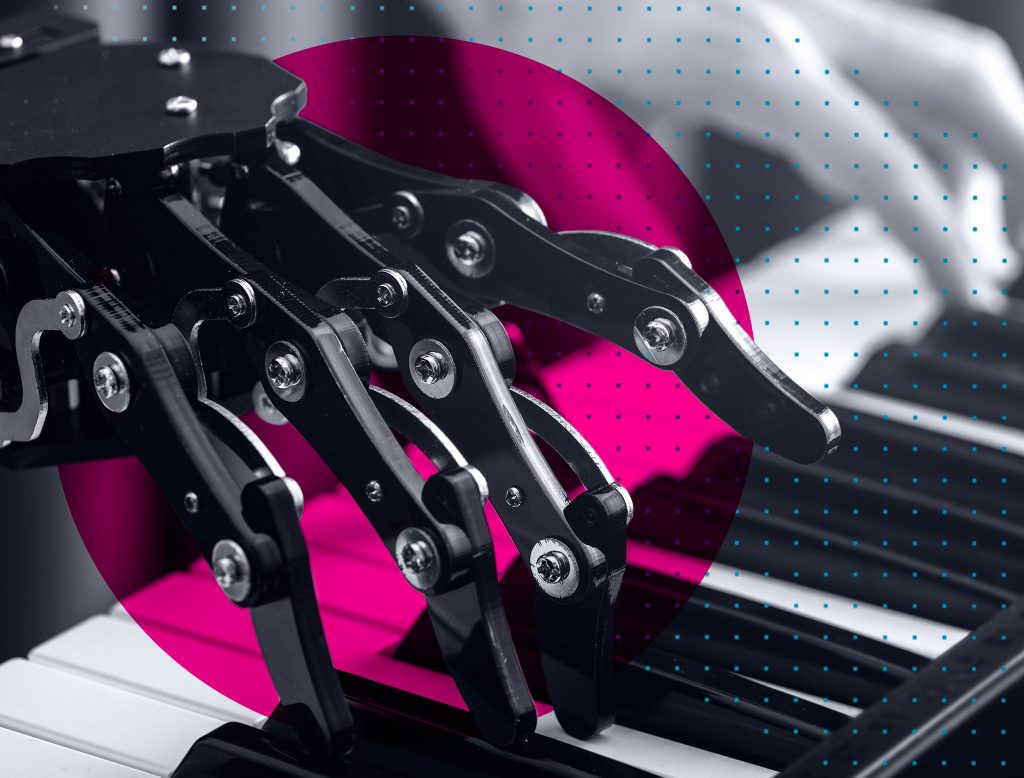Nowadays, more efforts are being made to make the work of women more visible in different fields of knowledge. In science and artificial intelligence there are still barriers thet need to be overcome if women are to be equally represented in the labor, economic, political and social transformation that will arise with the fourth industrial revolution. This article presents the context of women’s participation in this context, as well as the stereotypes and barriers that must be overcome. Finally, influential women in the field of artificial intelligence are presented with the contributions they have made in this area of knowledge.
Since 2015, February 11 was established as the International Day of Girls and Women in Science. This day was established by UNESCO to ensure that women have equal representation in the field and to guarantee and promote access both academically and occupationally in the scientific field [1]. The establishment and recognition of this day becomes relevant when analyzing the numbers of female participation in scientific fields. The Nobel Prize in science has been awarded to 22 women (Marie Curie won it twice) among 602 total awards in the fields of medicine, physics and chemistry. In 2018 WIRED magazine [2] found that in Google only 21% of technical positions are held by women and in the case of artificial intelligence they hold only 10% of the positions; Facebook presented similar numbers with 22% and 15% respectively. The Latin American and Caribbean region shows large differences between countries in the participation of women in STEM (Science, Technology, Engineering and Mathematics) programs; countries such as Honduras, Mexico, Colombia, Ecuador and Chile have a percentage of less than 30% [3]. Particularly, in Colombia, according to Minciencias, only 38% of researchers are women [4], in STEM programs the percentage corresponds to 16.4% of the total number of graduates in the country, while in the case of men it corresponds to 34.5% [5].
The world is facing a transformation in the way we think, work and live, largely driven by the so-called fourth industrial revolution. The development of artificial intelligence, robotics, nanotechnology, biotechnology, genomics, among other fields, allow economic systems, government, health, industry, internet, labor market, among others, to present important changes [8]. It is imperative to guarantee the right to equal education for women, to eliminate stereotypes and social impositions and to build a fairer society.
Gender stereotyping in STEM:
According to the report presented by UNESCO [8], a study conducted by PISA revealed a large differential gap in career expectations among adolescents in 34 of the 63 countries analyzed, since less than 2% of females plan to study engineering or computer science. There are different studies that seek to explain this behavior. From the biological point of view, the results are inconclusive, and although differences in brain structure and hormones are detected, so far it has not been identified how these acts on cognitive strengths or weaknesses [9]. On the contrary, sociocultural factors have played a fundamental role in different cultures around the world.
Negative and unfounded stereotypes about girls and women in their abilities in mathematics and science persist in the present time. In the collective thinking it still persists the idea that women are not as good as men in mathematics and that scientific work is more suitable for men [9]. Some studies determined that girls and young women are aware of these stereotypes from an early age and that this knowledge causes them to lose interest in this field, for fear of being judged under these precepts [9]. These stereotypes are perpetuated by not knowing role models to inspire future generations. In this sense, historically many women scientists have not had the proper recognition for their discoveries, as in the case of Rosalind Franklin, whose research allowed to demonstrate for the first time the double helix structure of DNA, that information was taken and used without her consent by her male colleagues, Watson and Crick, who won the Nobel Prize in 1962 and would not have achieved it without Franklin’s work, four years after her death. Sadly, it is an example of the confrontations to these sexist stereotypes. Public comments revealed precisely by Watson demonstrate this, when he wrote referring to Franklin that “her belligerent mood interfered with the ability of her colleague Wilkins to maintain a dominant position that allowed her to think unhindered about DNA” and for that reason “she had to leave or be put in her place” [10].
Hill, et.al [9] present some recommendations to prevent these stereotypes from continuing to influence the decision of girls and young women who want to pursue careers in STEM:
- Promote in students a flexible and growth mindset about the concept of intelligence, i.e., support the idea that intelligence is not fixed and that it is possible to learn new things.
- Expose girls to role models of influential women in the field of mathematics and science.
- To raise awareness and fight against gender stereotypes and the negative effects they have on young minds, both women and men.
Female participation in the fourth industrial revolution:
Building an equitable society, without discrimination of any kind, is important enough to seek solutions to the deficit and slow growth in the representation of women in the scientific field. In addition, history has shown that, in the absence of diversification of thought in research, studies have been oriented toward understanding the characteristics of the male gender, causing significant delays. For example, in medicine, recent studies suggest that women tend to suffer a greater number of adverse effects than men with the use of drugs, because doses are based on clinical trials conducted and tested by men [11]; likewise, it has been shown that women are 50% more likely to be misdiagnosed when suffering from a heart attack, as some symptoms may be different from those identified in men [12]. In engineering, the first designs of airbags for protection in automobile accidents were tested with dummies made to the standard size and weight of men, resulting in deaths of women and children [13]; in the same field is the case shown in our previous blog article entitled “How to deal with demographic bias in facial recognition technologies”, which showeds the shortcomings that systems may have if they do not take into account aspects of demographic diversity.
Knowing and learning from history allows us to understand the present and be prepared for the future. We are currently facing a technological and digital revolution that will influence major aspects of our daily lives, known as the fourth industrial revolution (industry 4.0). This transformation is related to the creation and incorporation of technologies to create the so-called smart industry, through the connectivity provided by the internet of things, the analysis of large amounts of information and artificial intelligence. According to UNESCO [8], the automation of jobs that require basic skills is continuously increasing, which will demand a higher level of education to access the labor market. In the same report, they anticipate that more than 60% of children who are currently in primary school will work in jobs that do not exist yet. In that sense, they state that 70% of jobs with a high risk of being automated are mostly performed by women, and they also predict that they will lose 5 jobs for every job gained in Industry 4.0, compared to a 3:1 ratio for men. Closing the gender gap in STEM education would therefore have a highly favorable impact on the growing economy and increasing the quality of life for millions of women.
Influential women in the field of artificial intelligence:
When talking about inspiring people in research and science, it is easy to find references to men such as Einstein, Newton, Pythagoras, Hawking, Turing, among many others, who have made great contributions to humanity. The case of women has been less reported, highlighted and in some cases omitted, even so, Marie Curie, Hedy Lamarr and Rosalind Franklin, among others, who achieved great developments, stand out. In the field of artificial intelligence (AI) only 12% of researchers in the world are women [14]. With the aim of highlighting the most influential women in the field, below is a summary of their most relevant work, in addition, I share a video of each of them for readers who want to learn more about them:
- Fei-Fei Li: Professor of computer science at Stanford University and promoter of the creation of the ImageNet database. This database was a key element in the development of deep learning architectures and with which it is possible to perform many tasks. She is currently the Chief Scientist of AI/ML at Google Cloud, head of the AI department at Standford, co-founder of the non-profit organization AI4ALL (AI for All) and launched the AI institute focused on human behavior [14].
- Daniela Rus: Director of the Computer Science and Artificial Intelligence Laboratory at MIT. She is one of the leading researchers in the field of robotics and her research topic on inter-robot cooperation and communication, self-configuring robots and non-rigid-body robots have enabled great progress in these areas of knowledge [14].
- Daphne Koller: Professor at Stanford University since 1995, focused in the area of machine learning and co-founder of Coursera, one of the largest online education platforms in the world. Currently, she is the founder and CEO of insitro, a startup that applies machine learning to transform discovery and development in the pharmaceutical industry [14].
Conclusions
The fourth industrial revolution will drive a transformation led by technologies such as the internet of things, artificial intelligence, robotics, genomics, among others, which will highly influence and impact people’s lives. Breaking gender gaps becomes a fundamental necessity for women to be prepared and able to access the labor field that this transformation implies. For this, it is necessary to demystify stereotypes and make visible the work of many women who can serve as an inspiration to future generations.
Maria Ximena Bastidas R.
Bibliography
[1] UNESCO, «International Day of Women and Girls in Science,» p. https://en.unesco.org/commemorations/womenandgirlinscienceday, 2020.
[2] T. Simonite, «AI Is the Future—But Where Are the Women?,» WIRED, pp. https://www.wired.com/story/artificial-intelligence-researchers-gender-imbalance/, 17 08 2018.
[3] F. J. García-Peñalvo, «Women and STEM disciplines in Latin America: The W-STEM European Project,» Journal of Information Technology Research, 2019.
[4] Minciencias, «“En Colombia solo el 38% de los investigadores, son mujeres”: Minciencias,» pp. https://minciencias.gov.co/sala_de_prensa/en-colombia-solo-el-38-los-investigadores-son-mujeres-minciencias, 20 agosto 2020.
[5] L. K. Patiño Cardenas, Una maratón en tacones: la brecha de género en ciencia y tecnología en la educacción superior Colombiana, Univerisdad Internacional de la Rioja, 2020.
[6] D. S.-F. C. E. H. Luke Holman, «The gender gap in science: How long until women are equally represented?,» Plos Biology, 2018.
[7] H. Briggs, «Closing gender gap in physics ‘will take generations’,» BBC, 20 abril 2018.
[8] A. Bello, T. Blowers, S. Schneegans y T. Straza, To be smart, the digital revolution will need to be inclusive, Paris: UNESCO Publishing, 2021.
[9] C. Hill, C. Corbett y A. S. Rose, Why So Few? Women in Science, Technology, Engineering, and Mathematics, AAUW, 2010.
[10] B. L. Benderly, «Rosalind Franklin and the damage of gender harassment,» Sciencemag,org, pp. https://www.sciencemag.org/careers/2018/08/rosalind-franklin-and-damage-gender-harassment, 1 agosto 2018.
[11] Y. Anwar, «Lack of females in drug dose trials leads to overmedicated women,» University of California – Berkeley, 12 agosto 2020.
[12] Heart matters, «Misdiagnosis of heart attacks in women».Heart matters magazine.
[13] C. Criado-Perez, «The deadly truth about a world built for men – from stab vests to car crashes,» the guardian, 23 febrero 2019.
[14] R. Toews, «8 Leading Women In The Field Of AI,» Forbes, pp. https://www.forbes.com/sites/robtoews/2020/12/13/8-leading-women-in-the-field-of-ai/?sh=784c1c0c5c97, 13 Diciembre 2020.



